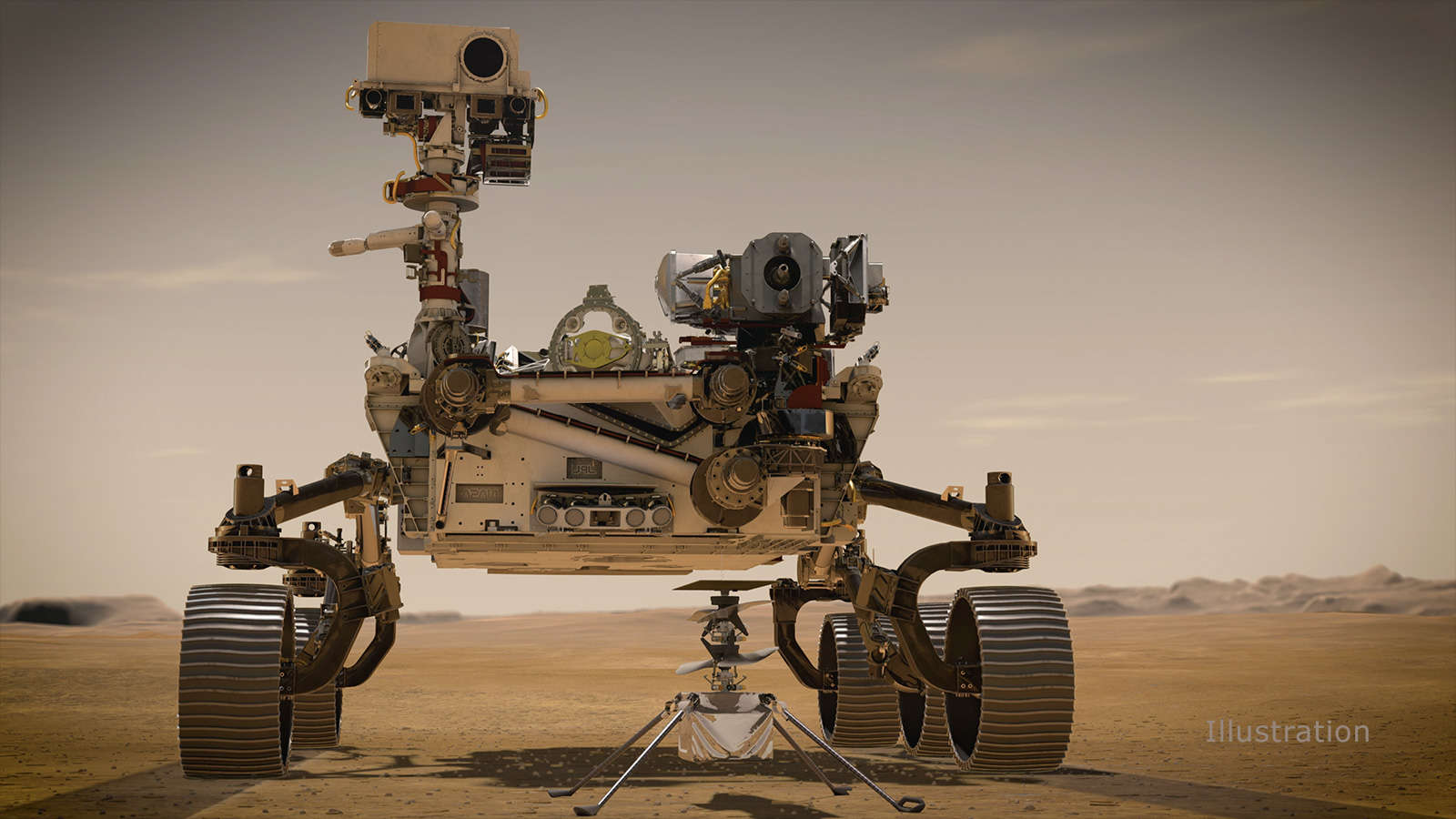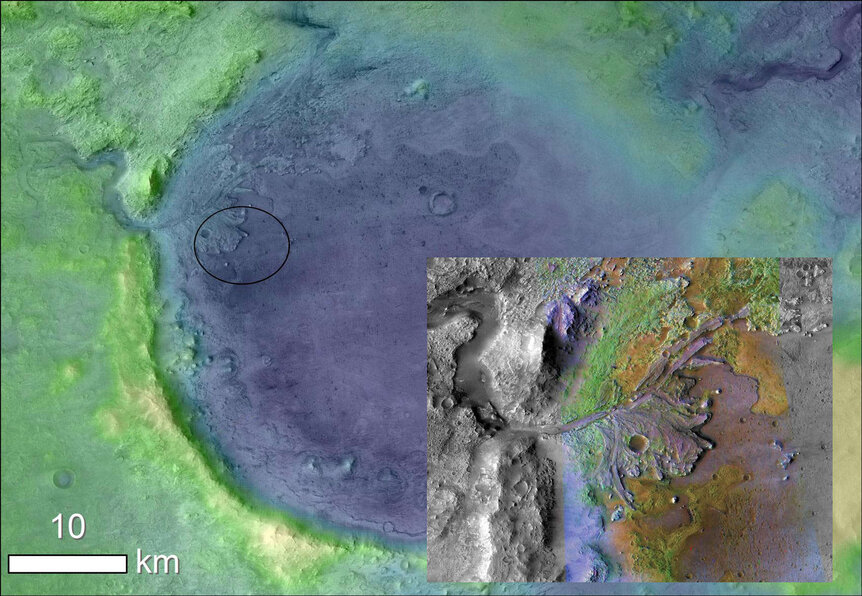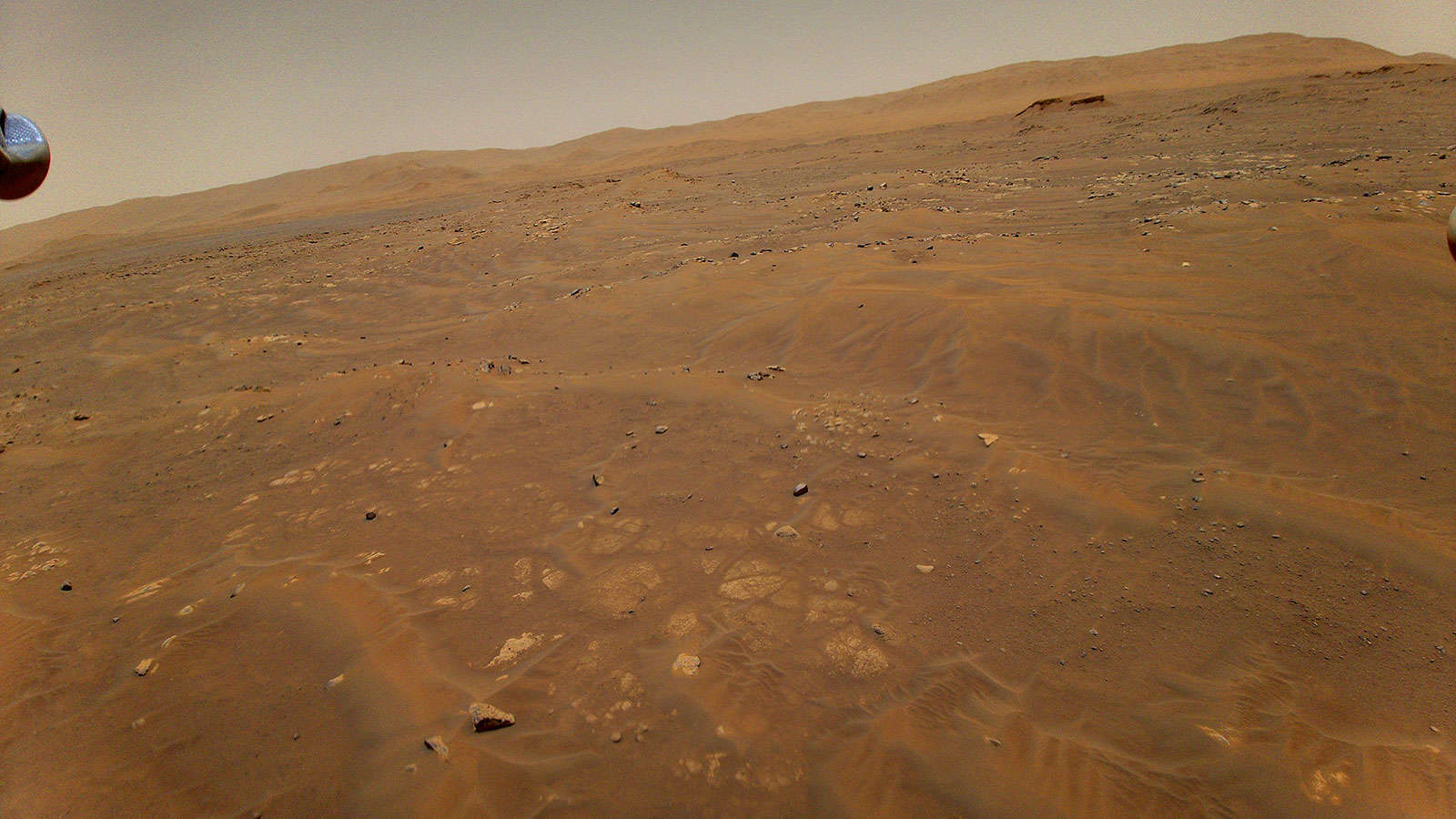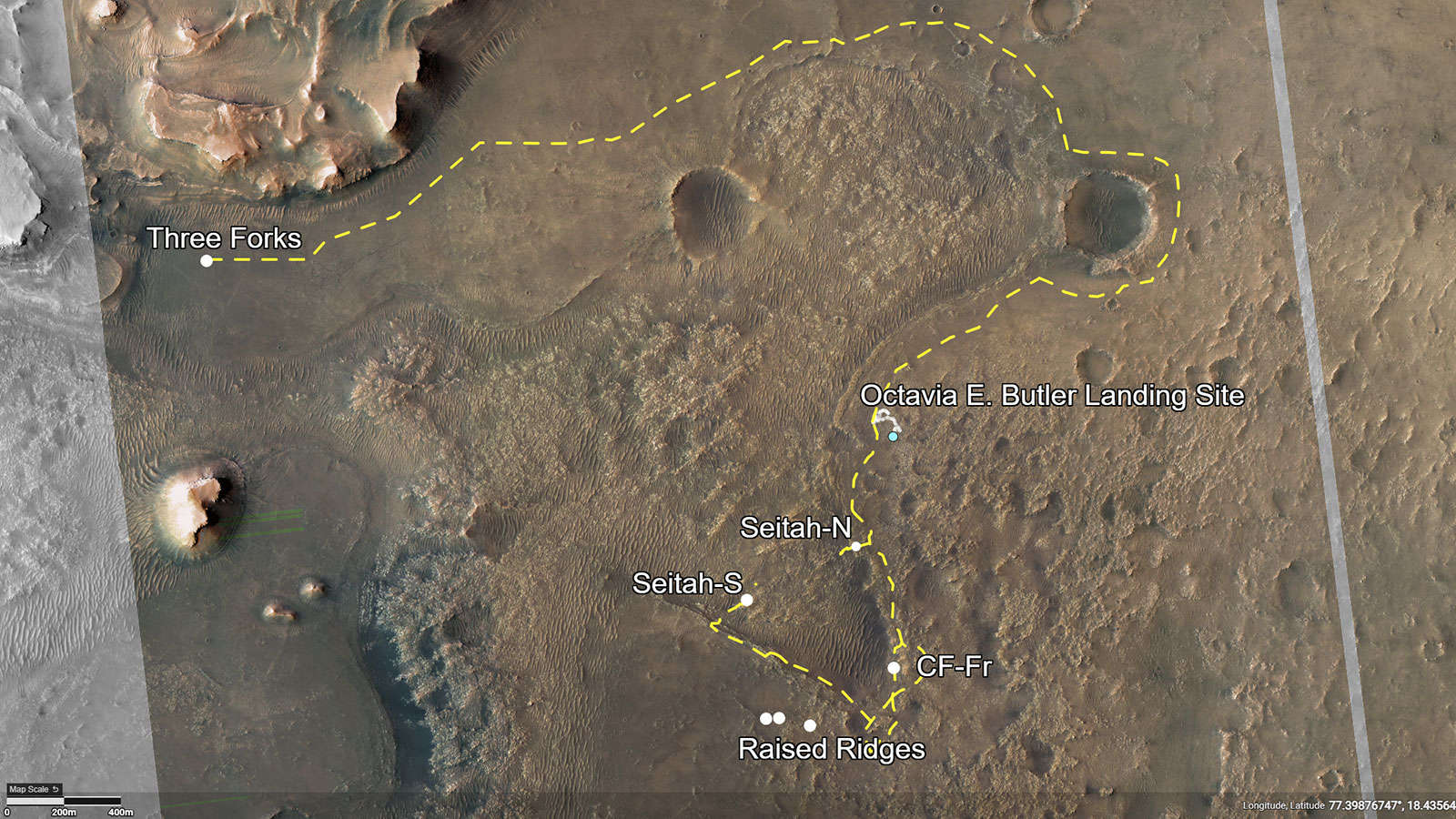Create a free profile to get unlimited access to exclusive videos, sweepstakes, and more!
Perseverance is now ready to actively begin looking for evidence of life on Mars

NASA's Perseverance rover landed on Mars on Feb. 18, 2021. Since that time it's been in a shakedown phase, testing its various complicated components to make sure everything is functioning A-OK.
During that time it's watched a sunset, flown a helicopter, listened to itself moving around, inhaled the air of Mars to make breathable oxygen, and much more.
The commissioning phase of the mission was completed on June 1. Everything works the way it ought to. And now, this car-sized nuclear-powered laser-eyed mobile astrobiology lab is starting looking for aliens in earnest.
Well, kinda. The main mission of the rover is to look for evidence that Mars either supported life in the distant past or if it may still now. It will examine several square kilometers around its landing site (named "Octavia E. Butler" after the renowned science fiction author) to investigate the geology and chemistry of the area to see if anything was ever fruitful there and multiplied.
The landing site was chose very carefully. Perseverance touched down in the 50-kilometer-wide Jezero Crater, which was a lake of standing water several billion years ago. Minerals detected from orbit are consistent with having formed in water, and geologically it's even more obvious; a huge fluvial delta is present in the northwest corner indicating a river flowed into the crater, and on the crater's opposite side is a similar outlet.
Perseverance is near the delta and has been mapping it from the surface (and the air, thanks to Ingenuity) to help scientists and engineers back on Earth plan out a route for it to take. It has already moved several hundred meters, and over the next Mars year (about two Earth years) it will travel a lot more. Along the way it can use a suite of instruments to investigate the terrain, including a laser that can vaporize rock (the materials then glow at characteristic wavelengths that can be used to identify them), various detectors that can analyze the chemical content of rocks, and, should a particularly interesting area be found, Perseverance has a drill that can extract samples from the surface.
That last one is a Very Big Deal. The rover has a very complicated system in place to collect these samples. First, the 2-meter robot arm deploys a drill that will extract a core sample from the surface of Mars. The drill and sample are then inserted into a tube that has been maniacally cleaned by NASA back on Earth to make sure no trace of any terrestrial life remains in it, so that a pristine sample of Mars remains uncontaminated.
The tube is then imaged to record its contents. A ramrod is deployed to compress the sample and then it's imaged again to measure its volume. The tube is then hermetically sealed and returned back into storage. 43 tubes have been sent to Mars in the rover, with a goal of getting at least a dozen samples.
That storage on the rover is temporary. Eventually, scientists and engineers on Earth will find a place on the surface (called the sample cache depot) where the tubes can be placed, where they will await — get this — future missions to come along, pick them up, and send them back to Earth.
I love this. It's a fairly complicated procedure, but a lander will drop down near the cache site, use a small rover to retrieve the tubes and then place them on board a small rocket (the Mars Ascent Vehicle) that will send them up into orbit. Another mission, planned for launch in 2026, will then rendezvous with and grab the samples, then leave orbit to return to Earth, arriving back here in 2031.
I'm pretty sure Wile E. Coyote designed this, but given what JPL has done in the past, I have little doubt they can do this. This video explains the procedure:
Getting the samples to Earth is critical. The rover's functionality is amazing but limited; there's only so much we can send to Mars. Bringing pieces of Mars to Earth means being able to use far more sophisticated techniques to analyze them, as well as having them around in the years to come as even more advanced tech is developed.
What will scientists be looking for? Signs of life, past or (maaaaaybe) present. If the Jezero lake bed had, for example, microbial mats in it, these will have various characteristics that are identifiable in the lab. And if scientists find them, well. That would be something, wouldn't it?
Perseverance will search a nearby bit of the crater called the Séítah unit (which means "amidst the sand" in the Navajo language; how lovely!) that is a promising region with some of the oldest geological rocks in Jezero, including bedrock and sedimentary layers above it. Perseverance is likely to retrieve samples there, then return to the landing site.
After that, hopefully, it will travel farther to a site called Three Forks, which is at the base of the big delta. I'm pretty excited about this; a delta is formed when a river deposits sediments as it enters a lake. If little Martian beasties ever swam the waters of the Red Planet, this is perhaps the best place to find evidence of them, even if it's eons old.
But all this is still ahead for the rover. Its scientific mission has just started. While the nominal duration is one Martian year, I have little doubt it will be extended; that's par for the course for these rovers, which have hugely outlasted their warranties. Exploring Mars is hard work and takes amazing machines and brilliant minds behind them.
That last one is something we have on Earth in large quantities.

















